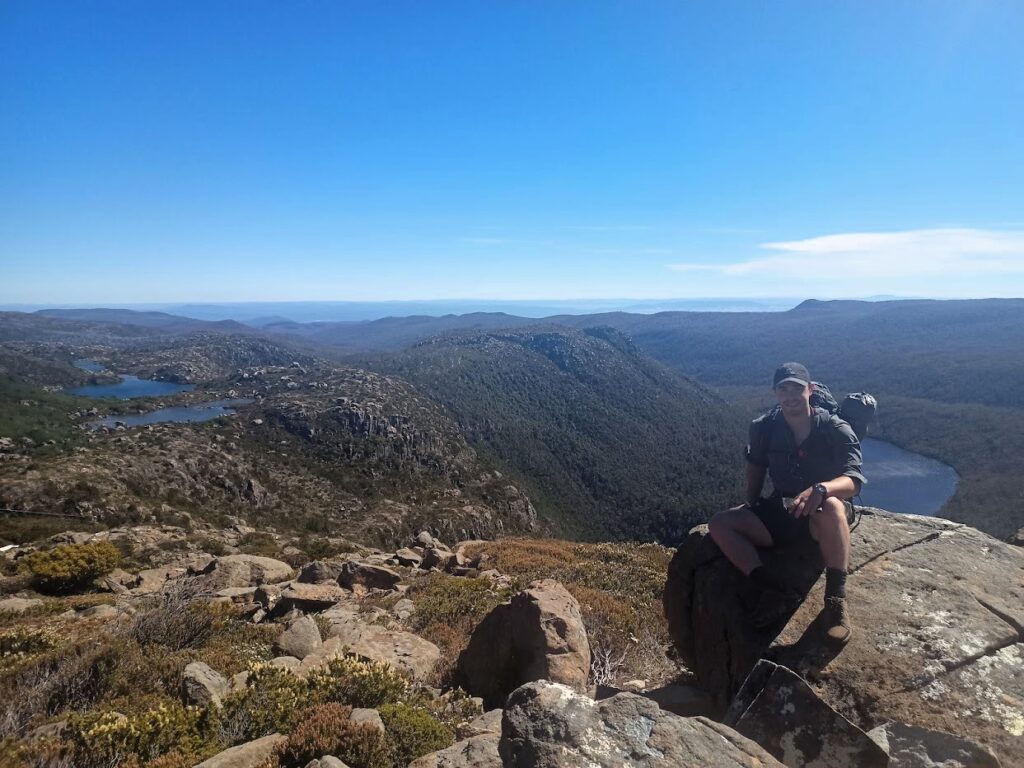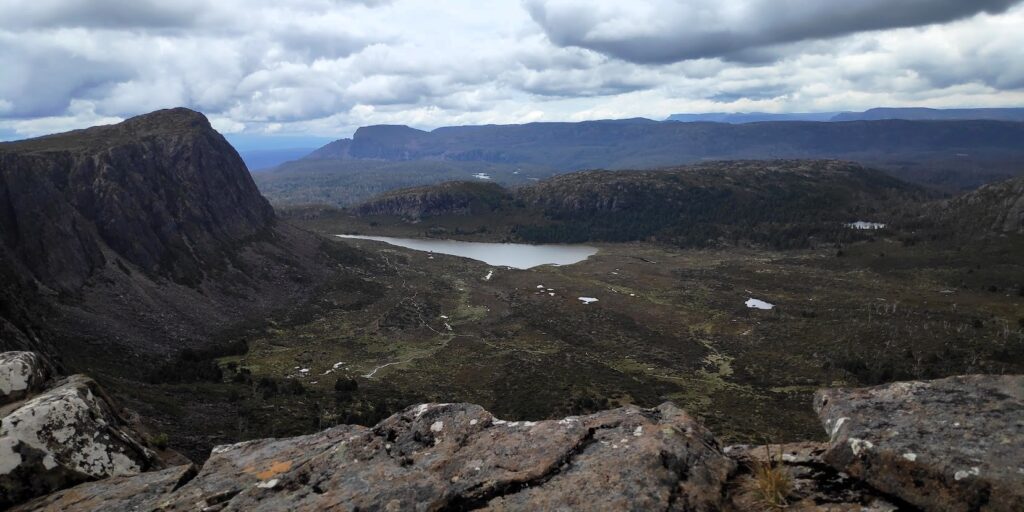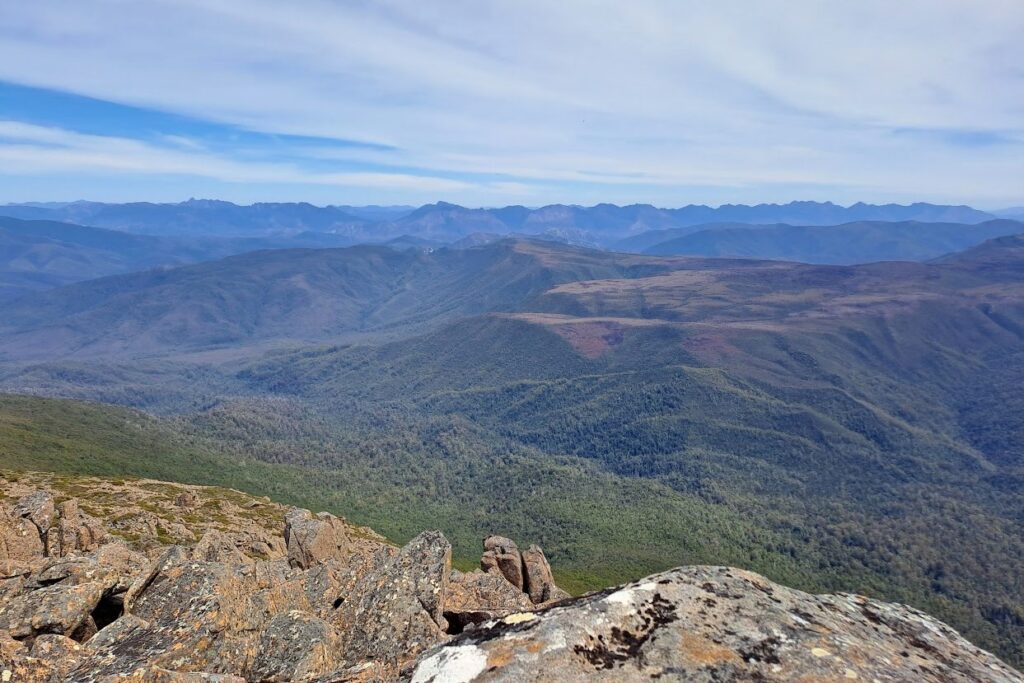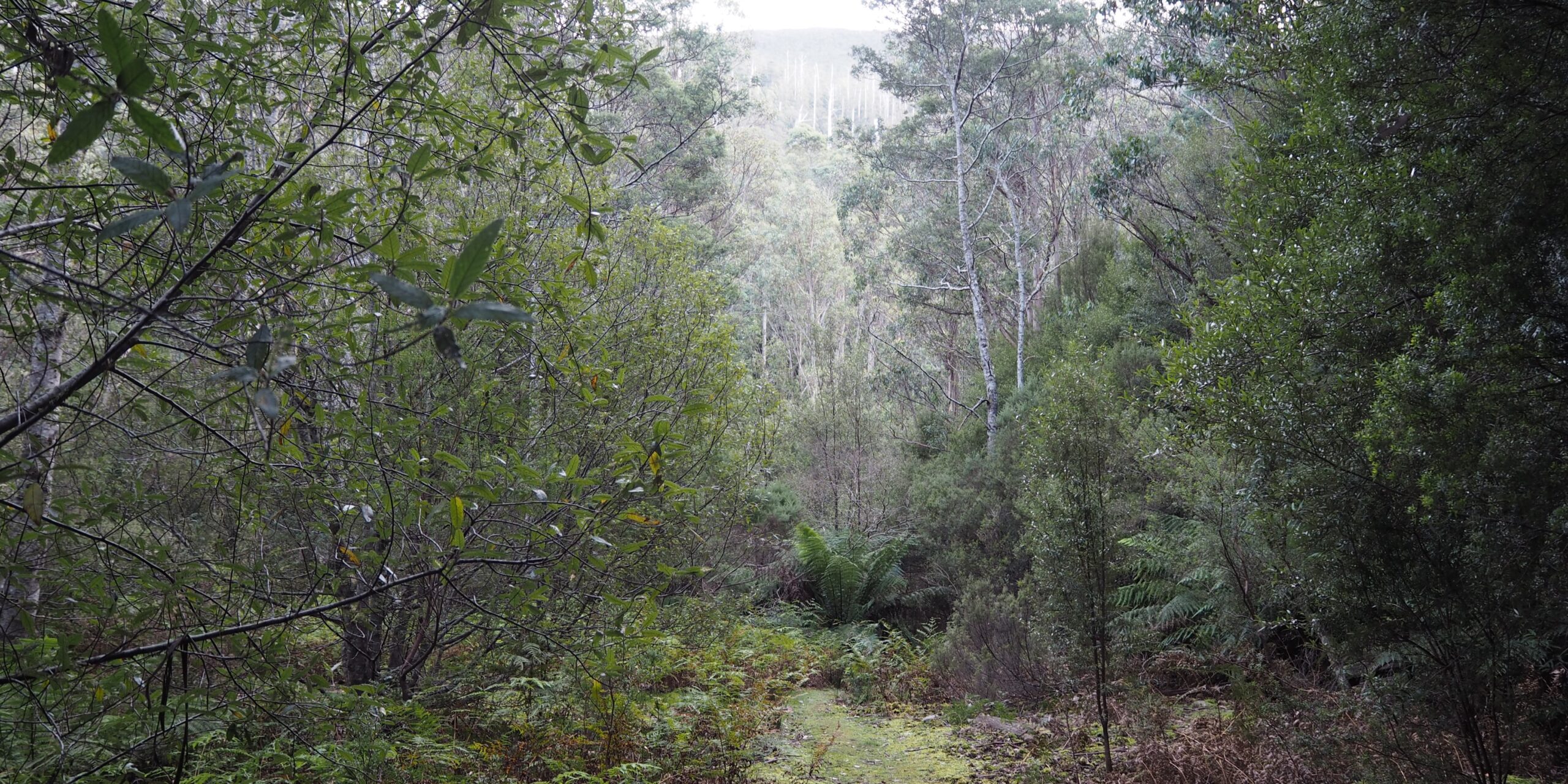Tasmania has some of the most stunning yet remote wilderness in the world. We have it all – ancient rainforests, windy alpine, miles of beaches and button grass plains. The best part is you don’t have to go far from a town or city to be totally remote. Even Mount Wellington is 20 minutes from Hobart CBD. On occasion you won’t even pass hikers for a couple of days. It’s truly magical.
While there are plenty of awesome day walks, some regions including the Western Arthurs require up to two weeks of hiking to really get into the guts. Many other overnight walks are shorter and thus more accessible, generally taking 1-2 nights. I have done a fair few of those, including Walls of Jerusalem, Freycinet Circuit, Overland track (5 nights there abouts) and more. With some experience, I decided to create a beginners guide to help you make the most out of the Tasmanian Wilderness.
This guide is designed to be followed in months where there is less risk of extreme weather, namely, not in the middle of winter (June – August). Still, Tasmania’s wilderness can be unforgiving and unpredictable so one must be well equipped for any weather despite the forecast (packing list below).
One should also note that I too consider myself a beginner. While I have done a number of overnighters, I still am lacking in mistakes to learn from. There are probably some points missing in the guide, so if you have any recommendations, pop it in a comment at the bottom.

Overnight Hiking is a challenging experience as it follows some of these principles:
- You are always exposed to the elements, sleeping is limited to tents or shelters
- Long periods of walking in isolation (even if you bring a mate, you are away from civilization)
- Food consumed can only be prepared with limited equipment and storage.
- Limited access to technology such as phone reception
Before you start, always ask yourself
- Are you fit and well enough to undertake the walk?
- Have you let someone know about your plans?
- Have you read the walk material and booking information?
- Is your Parks Pass valid (required for entry to National Parks)?

Some general tips and advice
Firstly, take your time. Soak in the nature. The views are breathtaking. There is no need to rush, so take it slow and enjoy the experience. That being said, peak bagging is totally a thing and there are 158 Abels (mountains over 1100m) to swiftly conquer if you want a forgettable experience!
If it is your first time overnight hiking, chose a walk that isn’t too long or too difficult. Freycinet Circuit is a good one as it isn’t super long or hard. You can also take an alternative route avoiding most of the climb up Mt Graham, thus making it even easier, while still getting great views. I also recommend taking someone with you who has gone overnight hiking before as they can help if you run into any problems.
Most big walks in Tassie require booking ahead of time. This is to ensure there is room at campsites and to preserve the trail. Have a look on the Parks website before you go to ensure it is all arranged. Furthermore, check restrictions for fire in case your stove does not meet requirements.
Learn first aid, learn how to navigate and most importantly learn how to use your equipment. Fortunately, I have learned these skills through the army, however, there are many guides online for first aid and navigation, and knowing the basics can be crucial if you get injured or lost. While getting seriously lost or injured is rare, it can happen. However, every time you go out you use your equipment. Practice setting up your tent before you go, fit your bag properly and learn how to use your stove as a start.
If you find the experience too difficult or you begin to feel unwell, there is no shame in going back. It is always better to be safe than sorry. If you are close to the campsite, depending on the circumstances it may be safer to stay there the night and head back in the morning. As a last resort, you can get emergency airlifted however you’ll need reception or an emergency GPS to contact authorities.
You are very likely to get wet, even on days with a good forecast. It rains heaps here, sometimes at random, so when choosing gear try and take either waterproof and / or quick drying. Try not to dry wet gear in the tent or you might end up with condensation making everything even wetter.
Food and Water
Food must be able to be stored for long periods without refrigerating. Bringing light-weight goods is also a bonus, so the best practice is to remove unnecessary packaging or repack. Many hikers like to use freeze dried food as it is very light. While a good option, it is quite expensive. You’ll need a lot of food since you burn a fair amount of energy walking, so take a bit more than you need and aim for it to be calorie dense. Always take a bit extra in case of emergency. Also, there is nothing wrong with bringing comfort food at the cost of weight if that’s what makes you happy. Last time I went up Walls of Jerusalem, I took some leftover pizza and it made the walk just that little bit more enjoyable!
Water is essential for life (duh!). On most walks, water sources are easy to come by as Tasmania is home to many lakes, rivers and tarns (baby lakes). That being said, take at least three liters and ensure you read guides specific to the walk stating whether there are spots along the way to fill up. If there are not, take more. In summer these water sources can often dry up so be sure you account for that. While we have very clean natural water sources, you’ll usually need to purify any water from campgrounds. For this, I take water purification tablets. They are light and inexpensive at the price of making the water taste slightly chemically. There are other options to purify water if you so please, such as using a filter or boiling.
Some of the food I take includes:
Breakfast: Quick oat packets, cereal and dried milk in ziplock bags
Lunch: Wraps with retort pouch tuna, retort pouch meals, Pizza
Dinner: Freeze dried meal, cans of chili, retort meals
Snacks: Energy bars, fruit and nut mix, Jerky, chocolate

Packing list
I recommend packing light where possible by choosing gear that weighs less. You should aim for the pack to be no more than 20% of your body weight. The following list is what I would typically take and aims for a balance between weight, preparedness and comfort. Using mid range hiking gear + 2 day’s worth of food and water, my pack weight is usually around 11kg. I recommend keeping a list of what’s in your medical kit with it, so if you use something you can cross it out and easily remember to replace the items when you get home.
Pack essentials
- Large pack (40 – 60l should do)
- Compact day pack
- Gaiters
- Medical kit (see below)
- Sunscreen
- Food
- 3 liters of water minimum
- Mobile Phone
- Rubbish bag
- Tent / shelter
- Sleeping bag + liner
- Sleeping mat
- 2 x Medium waterproof bags
- Toiletries
- Quick dry towel
- Stove, fuel and scourer
- Cooking and eating utensils
- Sanitizer
- Lighter
- Headtorch
- Spare batteries and charger
- Multitool
- Whistle
- Compass
- Map / gps
- Toilet paper
- Ziplock bags
Clothing
- Weatherproof jacket and over trousers
- Neck warmer
- Hiking pants / shorts
- Hiking boots
- Breathable shirt
- Warm jacket / fleece
- Set of thermals (can use as pjs)
- Underpants + spare
- Hiking socks + spare (merino works well)
- Sun hat and warm hat
- Warm gloves
- Sunnies
Medical Kit
- Band-aids
- Tweezers
- Scissors
- Compression bandage
- Antibacterial ointment
- 2 x wound dressing bandage
- Salt
- Ibuprofen
- Space blanket
- Hydrolytes
- Water purification tablets
Some non-essentials
- Book
- Pillow (I use spare clothes in a dry bag)
- Camera
- binoculars (the birds here are cool)
- Insect repellant
- Cards
- Extra clothes
- Spider-man costume
- Wheel of cheese
And that’s about it. If there is gear you want to take not listed, take it. Some people tether the weight of their pack to their enjoyment of hiking. If you are relatively fit and able, carrying anywhere from10 to15 kilos over a long distance shouldn’t be a strain.
I hope this post was helpful. If you have any questions, queries or doubtful points chuck a comment down below. Now what are you waiting for? Get out there and explore!
A list of some popular overnight hikes (look them up on Alltrails):
- Cape Pillar Circuit – 3 days / 41km
- Walls of Jerusalem – 2-3 days / 24km
- Mount Field West Circuit – 2 days / 20km
- Frenchman’s Cap – 3-4 days / 46km
- Freycinet Circuit – 2 days / 31km
- Lake Rhona – 2 days / 28km
- Mount Weld – 2 days / 23km
- Mount Anne Circuit – 2 days / 31km
Links to some useful resources
Parks Tasmania – To buy parks pass, book trails and check for information and tips about hikes
Bushwalk Australia – A really useful forum with people sharing their experience and tips on certain trails
Tastrails – Great information on a ton of good hikes
Macpac – sells decent gear for a good price when on special. Mind you, my brother used to work for them, so I have a bit of a bias
BOM – Always check the weather.
TASMAP – To buy physical maps
